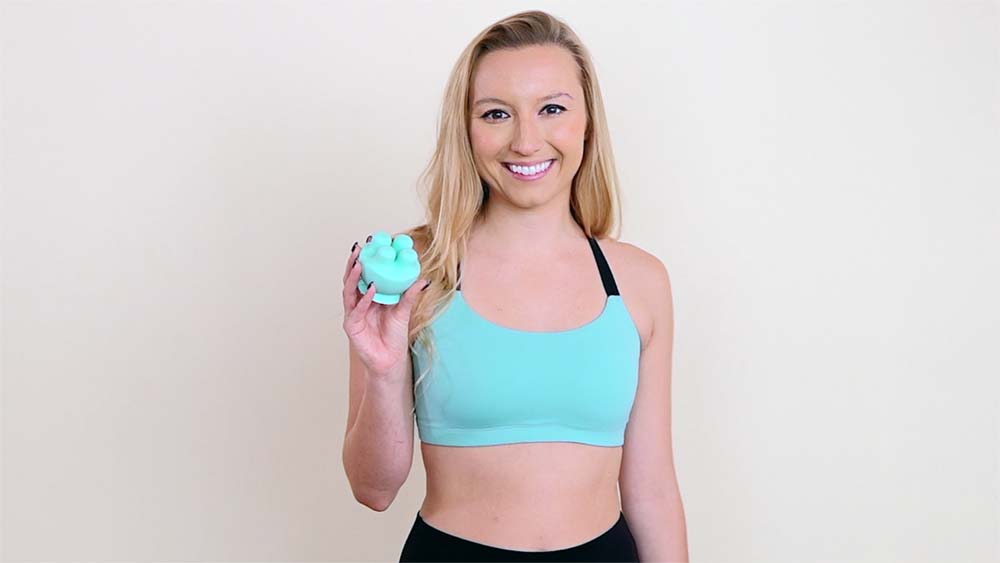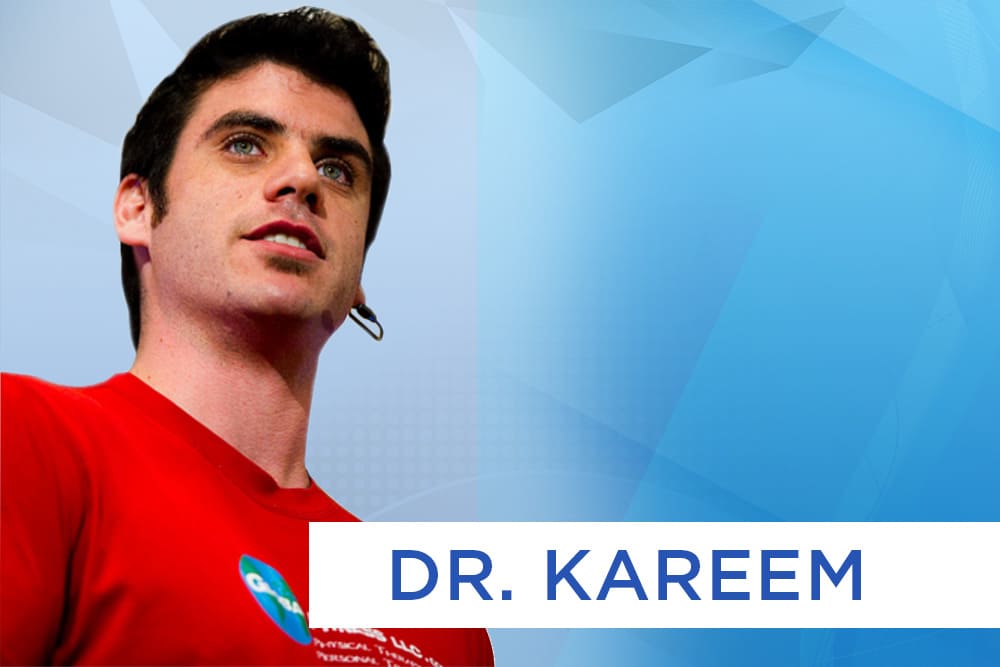

Before I begin, I would like to offer special acknowledgment and recognition to two incredibly special health professionals:
- Dr. Lynn Weston — Doc, you saved my life. Thank you.
- Matt Riemann — Matt, you brought quality of life back to me, and opened my eyes to a whole to new take on human health — one through which I plan to continually inspire others. Thank you.

 Ok, let’s get right to it…
Ok, let’s get right to it…Day 1 Post-Op: get up!
Day 2 Post-Op: Kill the meds
Day 3 Post-Op: Connect body and mind
Day 4 Post-Op: Aim for the finish line.
Obstacles: Infection (sepsis), Wound Infection (2nd surgery), Weight Loss, Dehydration, Mal-nutrition, Skin ulceration, Sleep Disturbance, Recurrence of morning abdominal pain following all surgery (to a lesser extent, but increasing)
 Solutions for obstacles:
Solutions for obstacles:- Infections (sepsis): antibiotics, interventional radiology for CT guided procedure to drain infection, injections to break down fibrin walls from loculation
- Infection (wound): take 2 staples out, drain wound, wound culture, antibiotics, clean and pack wound 2x/day until healed
- Weight loss: increase fat intake through shakes, add cheat days, eat additional carbs, increase frequency of meals
- Dehydration: carry water everywhere with me and drink throughout night, as well
- Mal-nutrition: conscious digestion + watching output on meal-to-meal basis and adjusting
- Skin ulceration: increase frequency of bag change from 3-5 days to 3 days, perform daily skin checks as best as possible & thoroughly during bag changes. ER was unable to be of help, so best managed at home and with preparation from ostomy care nurse.
- Sleep Disturbance: due to high output, unable to sleep more than 1-3 hours at a time before having to change the bag; no solution found. After ileostomy takedown, best solution was meditation.
- Recurrence of Morning Abdominal Pain: although to a lesser extent, this led me to believe the original issue may resurface, after all. I was fortunate to meet an excellent medical professional from Australia — Matt Riemann — who suggested low stomach acid production (sub-clinical), causing an inability to break down proteins; he prescribed 6-8 weeks of no protein, and then gradual re-introduction. My bowel habits were resolved within 3-4 weeks.
 Exercises:
Exercises:In the hospital:
- Ankle Pumps
- Diaphragmatic Breathing
- Sit to Stand
- Single Leg Standing (in bathroom while brushing teeth, for example)
- Walking — assisted with walker to IV pole to independent
After discharge (with biofeedback in front of mirror when possible, in order to re-learn how I was moving and build coordination as quickly as possible):
- Walking
- Climbing
After 6 weeks (with biofeedback in front of mirror):

 Squat With Kettlebell Pick Up Crossbody Press
Squat With Kettlebell Pick Up Crossbody Press
 Modified Kettlebell Swing
Modified Kettlebell Swing
 Kettlebell Front Squats
Kettlebell Front Squats
 Kettlebell Curls
Kettlebell Curls
 Kettlebell Crossbody Press
Kettlebell Crossbody Press
 Kettlebell Rows
Kettlebell Rows
 Kettlebell Cross-Body Rows
Kettlebell Cross-Body Rows
 Bodyweight Lunges
Bodyweight Lunges
 Bodyweight Reverse Spider Lunges
Bodyweight Reverse Spider Lunges
 Bodyweight Reverse Lunges With a Chop/Reverse Chop
Bodyweight Reverse Lunges With a Chop/Reverse Chop
 Bodyweight Rotational/Pivot Squats
Bodyweight Rotational/Pivot Squats
 Body Transformation Mini Circuit
Body Transformation Mini Circuit
After 8 weeks (paying special attention to ‘torque’ and making sure not to push too hard):
- Golf (1/4 swing and 7 iron & up only, to begin)
- Paddle boarding (avoiding full torque and building gradually)
- Beach hikes/walks (creates an unstable surface that challenges balance)
- Long walks carrying my son (any object would work, but to create resistance)
- Stair-climbing in sets of up/down 10x
- Playing with my son (this required me to get on my hands and knees, on/off the floor, etc.)
- Full workout potential, but focusing more on ‘active living’ than pushing with a workout. Resistance training will be more fully transitioned in after 4-6 months, while MED training will be the main focus until then, allowing my body to heal as the single priority, rather than breakdown and build again.
 Thoughts/Mind-Body Exercises:
Thoughts/Mind-Body Exercises:In the hospital:
- “Drink It Down” — this is a mantra I repeated to myself, almost in song-format, while making sure to smile. The goal was to create a happy digestive state, ultimately allowing my body to accept what might be perceived as a ‘foreign object,’ since it had undergone so much trauma.
- “Relax” — again, a powerful mantra to direct my body and give it instructions on how to react.
- “Everything is OK” — consciously, this was a scary time. Allowing my body and brain to understand everything will be OK was a necessary step to speed up rehabilitation, as often times we forget to communicate between our brains and bodies.
- “One Step at a Time” — these powerful, simple words were used as guidance to divide a massive goal into smaller parts and feel victory along the way.
- “Jordan, this is for YOU.” — these tear-jerking, chill-inducing words would prepare me for war when I needed to push the hardest.
After discharge:
- Meditation
- 5-sense Affirmations
-
Mind Coaching
I had the pleasure of meeting Angie Johnsey, who has served as a wonderful resource for me in “mind training.” Angie is a special and extremely talented woman, who originally was trained as a nurse, now specializes in Reiki and other forms of healing, and has an uncanny ability to detect when the “mind is playing games on you and causing stress.”
Angie describes the mind as a character of its own, so any perspective you might be carrying that leads you to believe you are unloved, uncared for, insecure (financially or otherwise,) is only based upon a set of beliefs you’ve acquired over time. These beliefs help guide great decision making for you on a daily basis, but the mind’s statements and beliefs can also be misguiding.
As you might imagine, recovering from any surgery, dealing with large medical bills, and various family strains of being a new father at the same time can be stressful. But, each of these stressors is also a blessing; learning how to shift my perspective, use the way my body feels as an indicator of what my mind is telling me, and learning to ‘observe’ instead of ‘react’ has been paramount in the way I feel and my recovery.
 Spirituality:
Spirituality:- Gratitude
- Prayer
- MLD
- Myofascial Release
- Cross-friction massage
 Ileostomy Care:
Ileostomy Care:- Change bag every 3 days (every day if there is ulcerated skin)
- Take bag off while in shower on days the bag gets changed and massage area (myofascial release & MLD)
- Press seal back on once per day
- Manage hydration with tons of water + electrolytes (4-5L per day since high output)
- Conscious digestion after meals to decrease output
- Watch and learn from output from every meal and emotion
- Get extra supplies
- Watch for shrinking stoma
- Shave every time bag is changed
- Sleep face up, somewhat reclined as needed
- If sleeping on the side, have bag supported by pillow for when it fills up
 Food/Diet:
Food/Diet:With Ileostomy:
-
Shake:
- Coconut milk
- Coconut water
- Whey
- MCT oil
- 2-3 frozen strawberries
-
Observation of Key Foods for Better Output:
- Olive Oil
- Avocado
- Grassfed beef
- Chicken
- Potatoes
- Yogurt (plain)
-
Veggies in small quantities:
- Spinach
- Peas (somewhat dangerous, must chew thoroughly)
- Bell peppers
- Mushrooms
- Carrots – cooked
- Sparing amounts of fruit, outside of banana.
After Ileostomy Take-down (no longer had fiber restriction in place):
- Reduce/Eliminate (as much as possible) protein for 8 weeks.
- Transition protein back in slowly over 2-3 weeks.
- Focus on ‘inclusion’-based diet, rather than ‘exclusion’ — most diets focus on what you’re not allowed to eat; instead, we might want to consider eating fewer foods, but foods that are safe and healthy for us. It stands to argue that we are only intended to eat a certain # of foods. As we look around at every other animal species on Earth, each one has a select, or “inclusion-based diet,” rather than exclusion. By focusing on whole foods that were natural to my ancestors in their living environments, I feel my best. Thank you, Matt Riemann, for you have given me my health back.
 Sleep/Rest Schedule:
Sleep/Rest Schedule:Minimum of eight hours per night, even if interrupted. Meditation also became a huge part of my life, and I meditate 2x/day, for 20 minutes each. My finding is that I feel as rested as an hour and a half nap, but even more tolerance for my day.

I hope this rehab program serves as more than a specific program for intestinal rehabilitation only. Should you ever go through a life-threatening surgery or health event, please consider using aspects of this as a template and going over it with your doctor to be sure it’s safe and effective for you.
Also, please consider the amount of motivation I put into finding answers, rebuilding myself, and finding a higher purpose to inspire me. Consider the number of people I involved for collective thought and prayer to help me recover from a very low spot. This world works in a funny way, and collective consciousness is part of it.
I believe you saved my life. Thank you. I appreciate you beyond words.
I am so grateful.
















